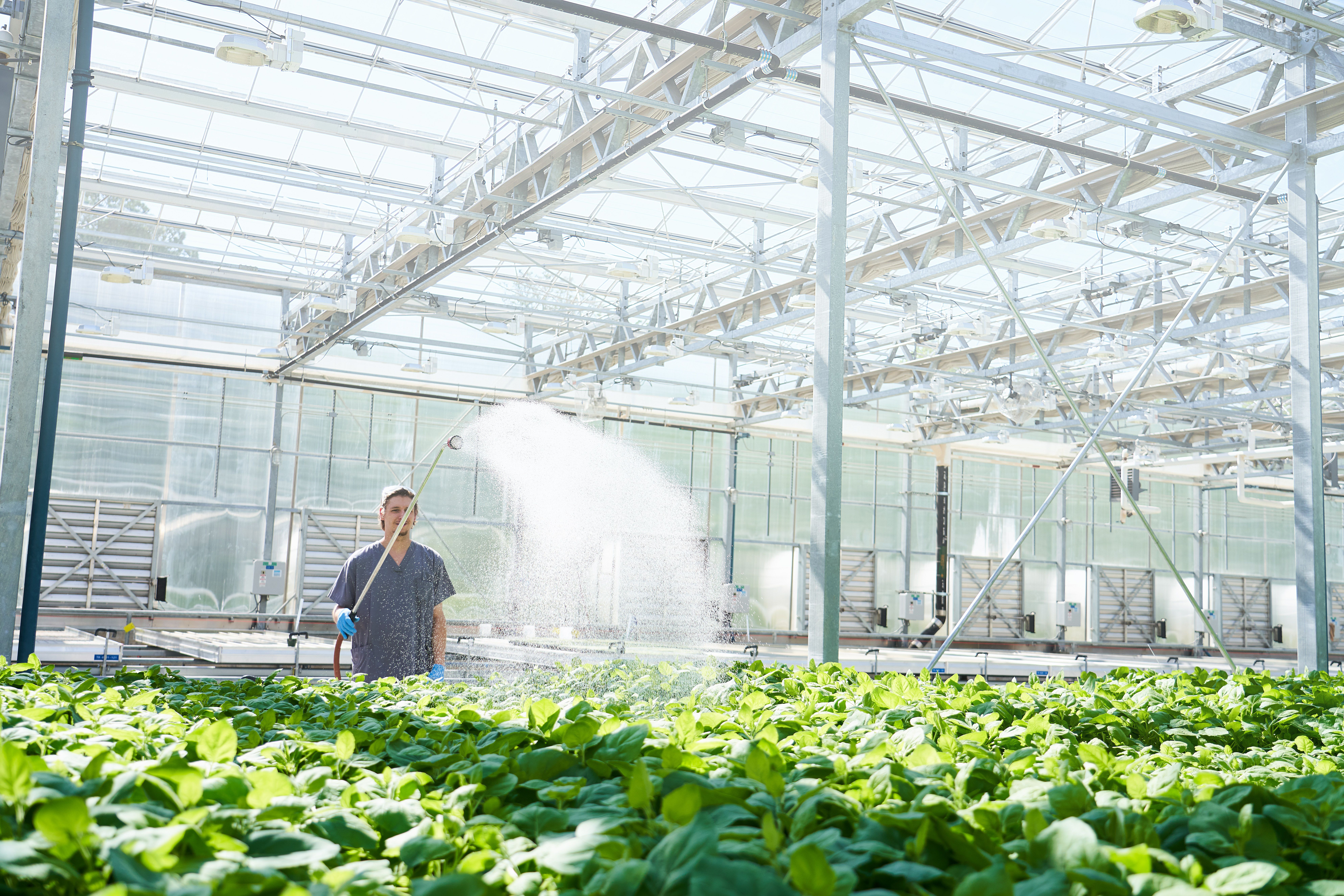Using Plants to Make Medicines

Harvesting tobacco plants ©Medicago

Harvesting tobacco plants ©Medicago
How does this align with my curriculum?
Learn how plants can be used to make vaccines.
Medicines are an important part of keeping you healthy. They can also make you healthy again, when you get sick. Medicines can take many forms. They can be pills or liquids that you swallow. They can also be injected into you. For example, you may get injected with a vaccine, such as for the flu or COVID-19.
Throughout history, people across the world have used plants as medicine. Written evidence has been found in places such as Egypt and China dating back to 206 BCE. In the country we now call Canada, Indigenous Peoples have used plants, trees and other natural materials as medicines to treat scurvy and other illnesses. Evidence of Indigenous medicinal practices are still used today. Western science continues to research and discover new ways of using plants to make medicine.
To make medicines, we may mix together different chemicals in a lab. We may also have other organisms make them for us. This includes organisms such as bacteria and fungi. People have used bacteria to produce insulin for treating diabetes. They have used fungi to produce the antibiotic penicillin.

Scientists working on a vaccine for coronavirus (Source: janiecbros via iStockphoto).
Image - Text Version
Shown is a colour photograph of two people in full protective gear, working at a lab bench.
Both people are wearing white overalls with hoods, blue surgical masks, goggles, and blue gloves. One is looking through a microscope, the other is typing on a computer keyboard. Two monitors on the bench show images of DNA strands, and several small charts and graphs.
What is pharming?
“Pharming” is the process of growing plants that help make medicines.
Did you know?
The word “pharming” comes from the words “pharmaceuticals” and “farming.” Pharmaceutical is another word for medicine.
A number of medicines are being studied to see if they can be grown inside plants. The idea is that while the plants are growing, they are also growing ingredients for medicines inside them. This is being tried for medicines, like the flu shot, that are usually made using animal cells. Growing vaccines in animal cells has several disadvantages. The main one is the length of time it takes to produce the vaccines. It takes around three months to mass produce a vaccine using animal cells. Another is that animal cells are usually grown in labs. There are only so many labs in the world that can grow these special cells. Using animal cells also involves the risk of transmitting diseases carried by those cells.
How does it work?
Like all organisms, how plants grow and function is determined by their genetic instructions. These instructions are coded in their DNA. By changing these instructions, scientists can have the plants make the proteins needed for vaccines. Once the plants have the instructions, they make the medicine as they grow.
When the plants have grown large enough, their leaves are harvested and the vaccine particles are removed.

Plant pieces soaking in enzyme bath (Source: WIKISKYMAN [CC BY-SA 4.0] via Wikimedia Commons).
Image - Text Version
Shown is a colour photograph of four glass flasks filled with greenish brown liquid.
The flasks are round with long necks and blue seals. Each one is half-filled with dark brown liquid. Thick greenish brown sludge floats on the surface. The glass above is misted with condensation.
In the background are botanical drawings of leaves and flowers.
One key benefit to producing vaccines from plants, is the ability to produce vaccines that do not need specific conditions to be kept stable. Most vaccines need to be kept cold until they are used. This would not be necessary for plant-based vaccines. For example, vaccines grown in lettuce could be extracted then made into a pill or capsule.
What does "pharming" look like?

Medicago greenhouse (Source: © Medicago. Used with permission).
Image - Text Version
Shown is a colour photograph of a person spraying rows of green plants in a sun-filled building.
The person is wearing blue medical scrubs, disposable gloves and a surgical cap. They are holding a long, thin pipe, high in front of them. A wide spray of liquid falls down over the green plants growing at waist level. The plants stretch into the foreground and across the width of the image.
Even though scientists have been working on this for a long time, there is still more work to do. Most importantly they need to make sure these medicines are completely safe for everyone to take. So far, pharming has only been used to make vaccines for chickens!
By finding new ways to make medicines, we can get better at making them for as many people as possible. It could also help us make medicine more quickly. This helps us ensure those that need medicines can get them.
Let’s Talk Science appreciates the work and contributions of Amy Haddlesey, Communications Manager from Hoffmann-La Roche Limited in the development of this Backgrounder.
About Roche Canada
At Roche Canada, patients and science are at the heart of everything we do. Our passion for science and our commitment to relentlessly pursuing the impossible for patients have made us one of the world’s leading pharmaceutical, in-vitro diagnostics, and diabetes care management companies.
With our combined strength in diagnostics and pharmaceuticals, we’re driving personalized healthcare (PHC) forward, while ensuring we deliver meaningful benefits for patients and a sustainable healthcare system. Because we’re committed to making quality healthcare accessible to everyone.
And we’re adding our expertise in new areas, such as artificial intelligence, real world data collection and analysis and collaborating with many different sectors and industries.
Having the courage to reinvent ourselves and question the status quo is what patients and the healthcare system expect from Roche - and our commitment is as strong today as it was on the first day of our Canadian journey in 1931. Today, Roche Canada employs more than 1,800 people across the country through its Pharmaceuticals division in Mississauga, Ontario as well as its Diagnostics and Diabetes Care divisions in Laval, Quebec.
For more information, please visit www.RocheCanada.com or follow Roche Canada on LinkedIn, or on Twitter @RocheCanada.
Learn More
How plant vaccines are developed (2022)
This video from Medicago (2:34 min.) has more detailed information about their process of developing vaccines using plants.
Your next vaccine could be grown in a tobacco plant (2021)
This story from National Geographic has more information about technologies being developed to use plants for vaccines.
References
Craig, J. (Jul 7, 2021). Your next vaccine could be grown in a tobacco plant. National Geographic.
Saxena, P. (Dec 2, 2022). The Making of a Plant-Based Vaccine. Medicago.
Van der Hoorn, R. (Mar 11, 2021). Molecular Pharming: Using Plants to Make Vaccines. University of Oxford Department of Biology.
